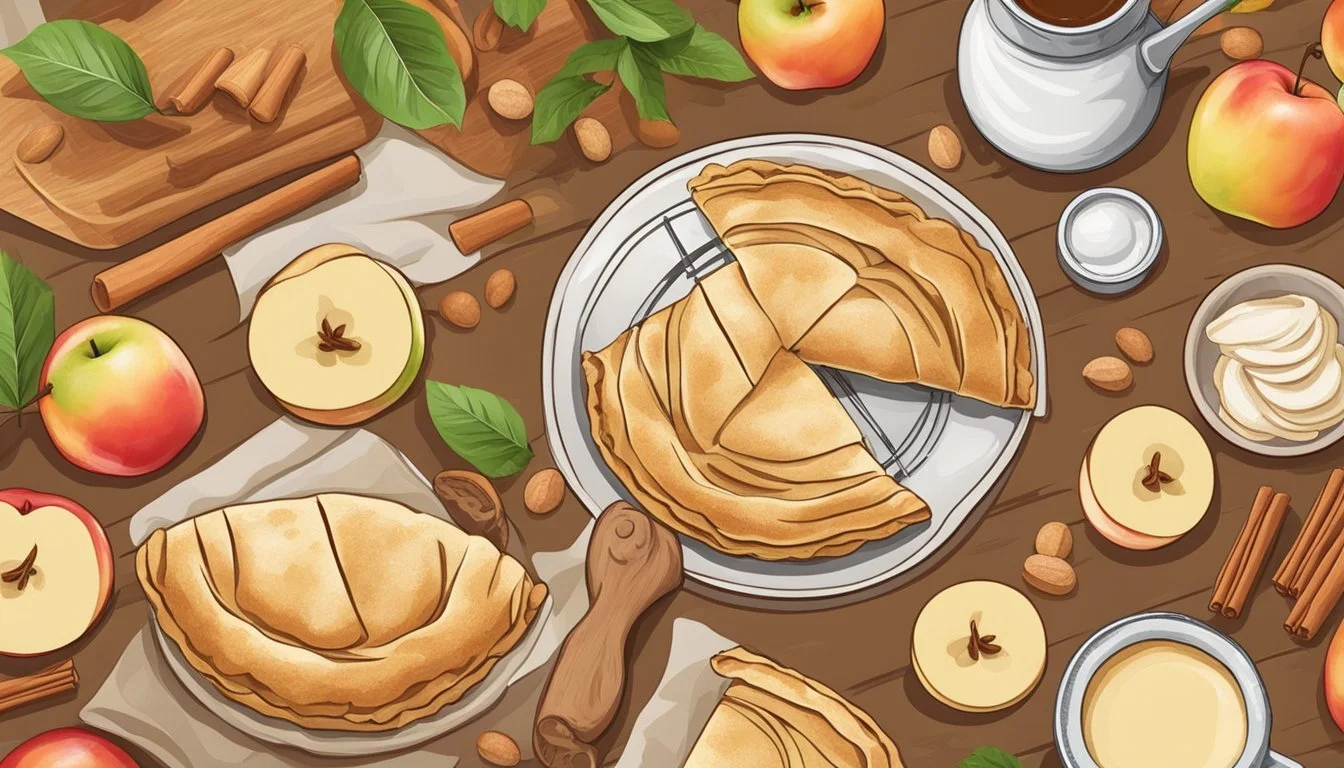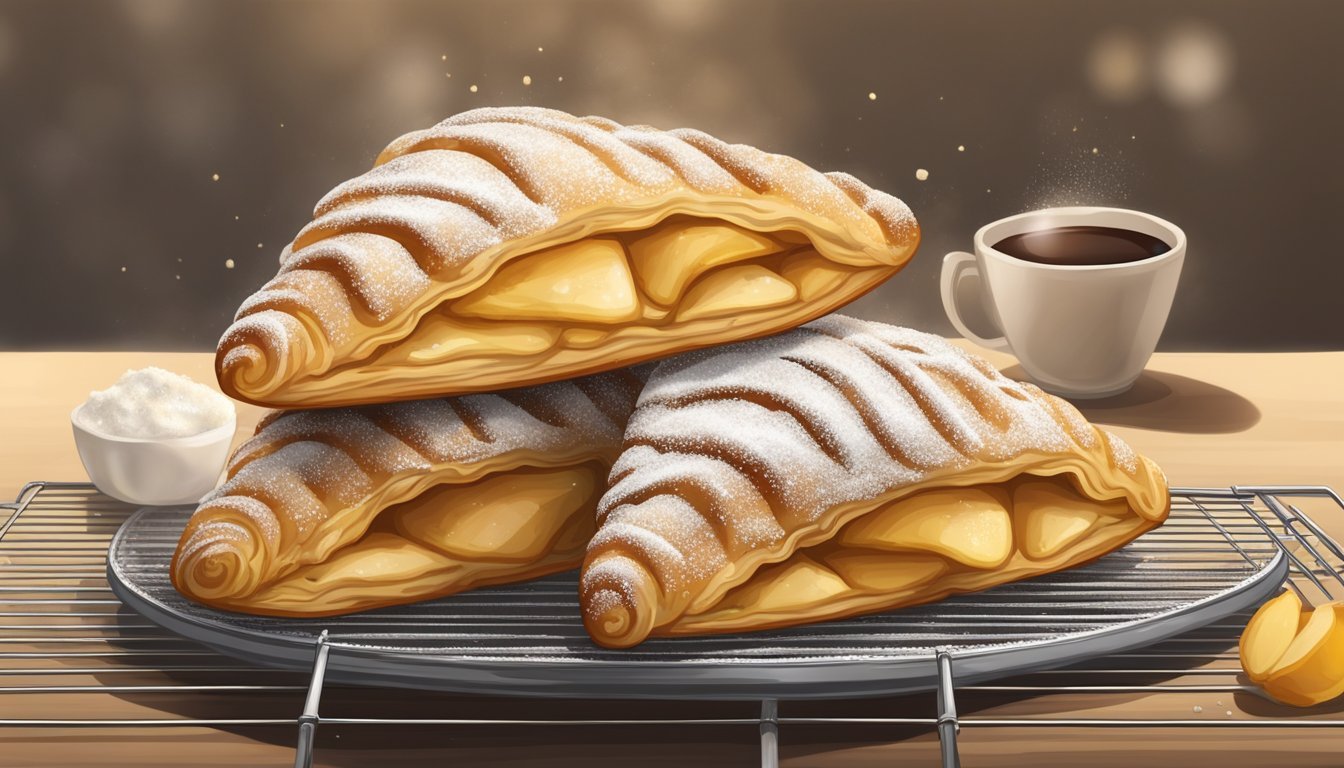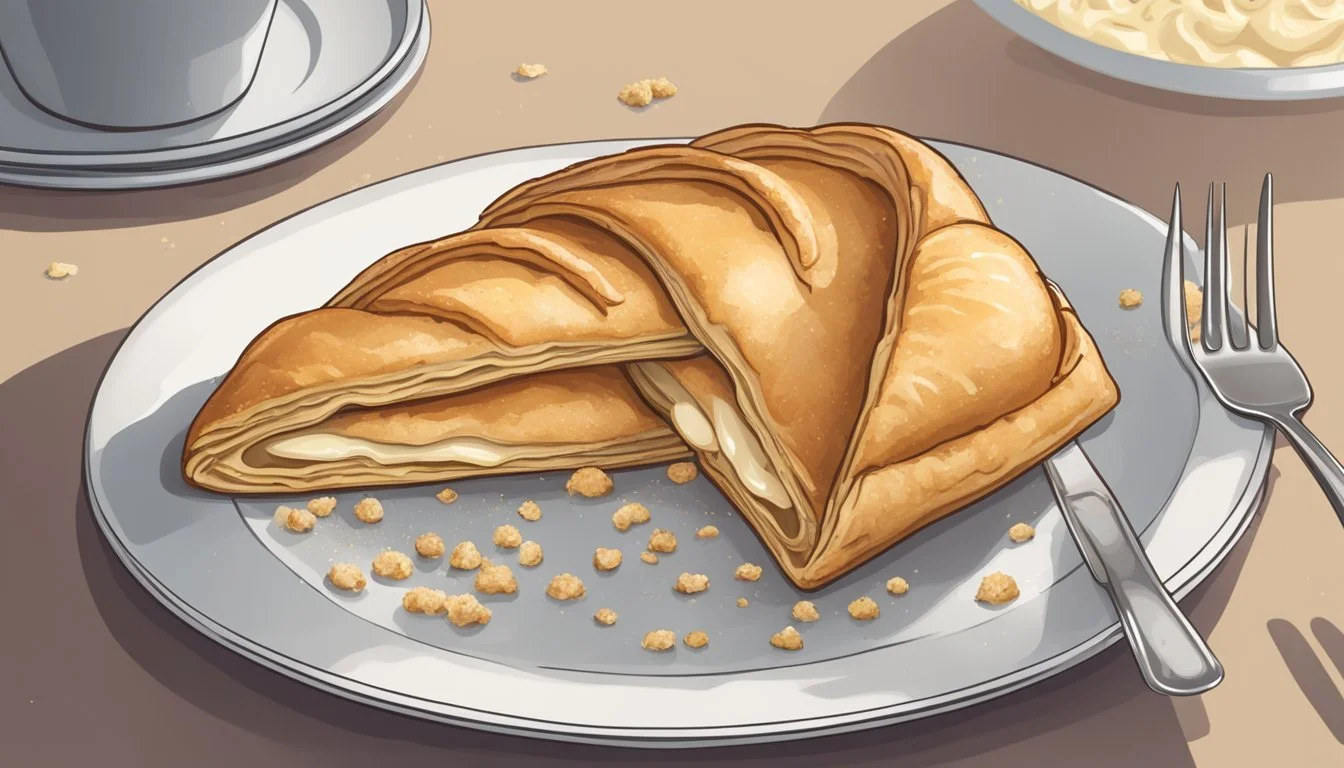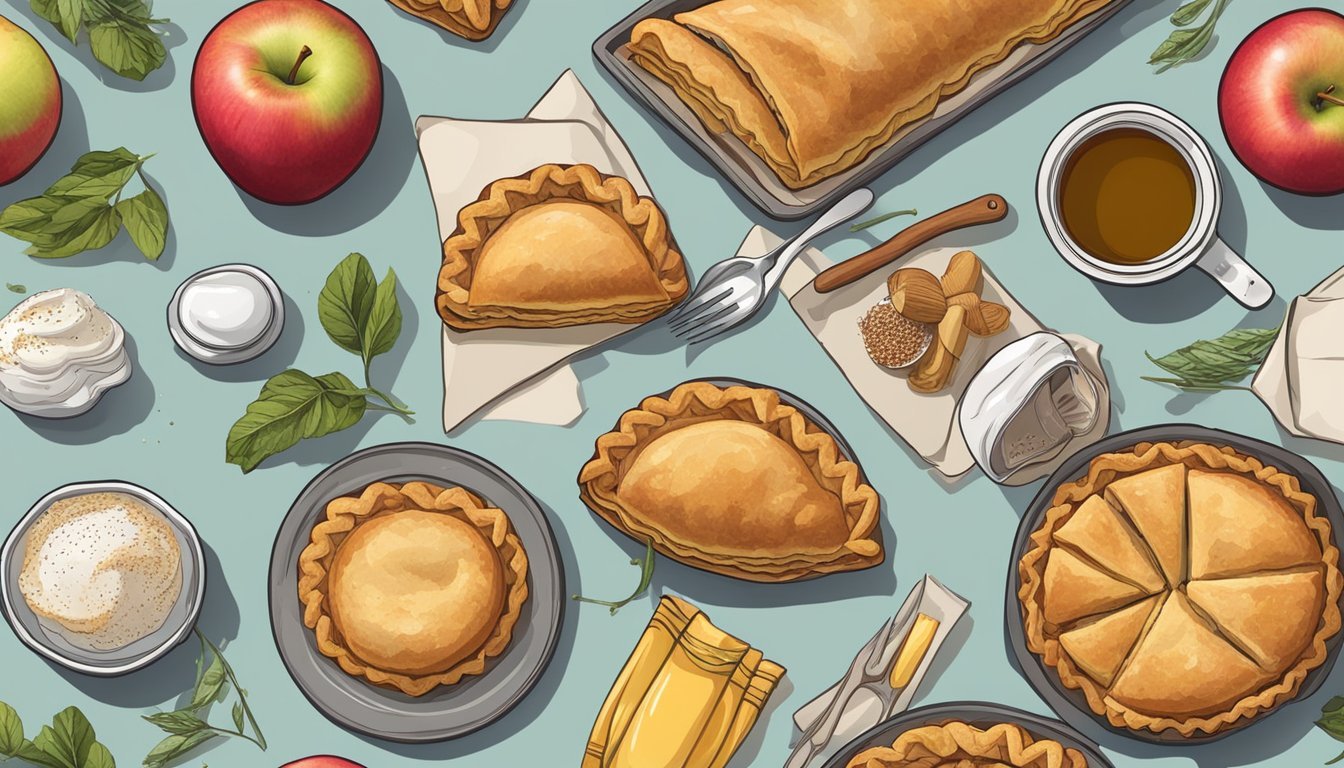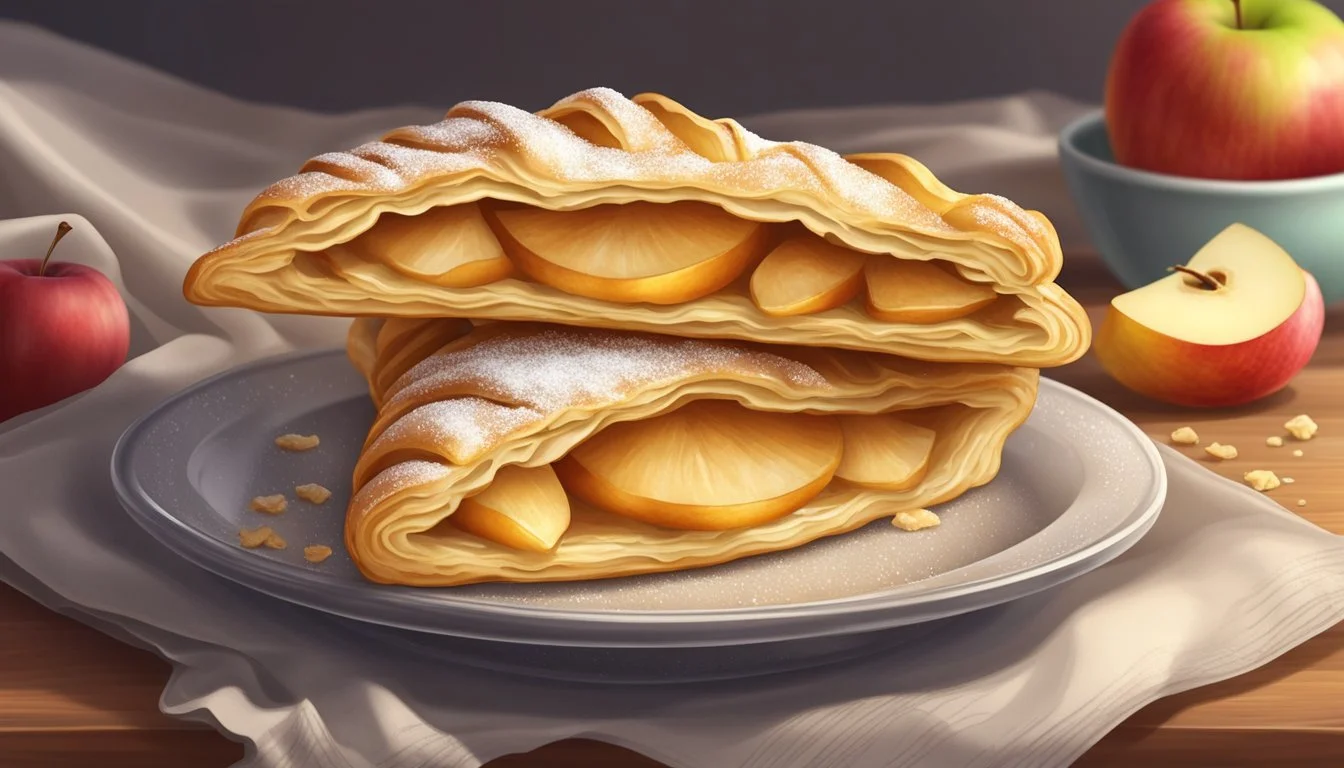How Do You Eat an Apple Turnover?
Essential Tips for the Perfect Bite
An apple turnover is a delightful pastry that offers a sumptuous combination of a flaky, buttery crust with a sweet, spiced apple filling. Often regarded as a convenient and portable dessert option, apple turnovers encapsulate the essence of homemade apple pie in a smaller, individual serving. It is traditionally prepared by wrapping a mound of apple filling within a blanket of puff pastry or pie crust, which is then baked until golden brown.
Eating an apple turnover can be a pleasurable experience when approached correctly. They are typically enjoyed fresh out of the oven or can be savored at room temperature, depending on personal preference. The high temperature of the freshly baked turnovers allows the flavors to meld beautifully but waiting for them to cool slightly before consumption can prevent burns and better allow the discernment of the subtle flavors. When served, they can be drizzled with a simple glaze or sprinkled with powdered sugar, adding a touch of sweetness and a visually appealing sheen to the top crust.
The versatile nature of apple turnovers makes them suitable for various occasions, whether it be a cozy breakfast, a sweet snack during the day, or as an after-dinner dessert. Pairing them with a scoop of vanilla ice cream or a dollop of whipped cream can elevate the simple pastry into a more complex dessert. Their size makes them particularly appealing for individual enjoyment, but they can also be shared, becoming a centerpiece for conversation and community at gatherings.
Choosing the Right Apples
Selecting the appropriate apple variety is key for creating apple turnovers that have the perfect balance of sweetness, tartness, and structure.
Best Apples for Turnovers
For turnovers, one seeks apples that hold their shape when cooked and provide a balanced flavor. Not all apples meet these criteria. The Granny Smith apple is a classic choice due to its tartness and firmness, which remain even after baking. The Honeycrisp is another excellent choice, offering a sweet yet slightly tart flavor, and a crisp texture that can withstand the heat of baking. Another suitable variety is the Pink Lady, known for its sweet-tart taste and firm flesh that doesn't break down easily. Golden Delicious apples are also a good option, as they provide a milder sweetness and retain a nice texture when heated.
Apple Varieties Comparison
Below is a table comparing the characteristics of apple varieties commonly used in turnovers:
Apple Variety Sweetness Tartness Texture Granny Smith Low High Firm Honeycrisp High Medium Crisp Pink Lady Medium Medium Firm Golden Delicious Medium Low Medium-firm Gala High Low Medium-soft
The Gala apple, while on the sweeter side and softer than the others, can be used for a sweeter turnover where a firmer texture is not the primary concern. In contrast, for those who prefer the classic flavor typically associated with an apple pie, Granny Smiths and Golden Delicious make a good combination, offering a balance between sweetness and tartness with a texture that stands up well to baking.
Preparing the Apple Filling
The apple filling is the heart of an apple turnover, comprising tender apples and a blend of spices and sweeteners that yield a flavorful compote. The use of butter forms a rich base for the apples to soften and meld with complementary seasonings.
Creating the Compote
To begin, one should choose suitable apples—typically a firmer variety that holds its shape when cooked, such as Granny Smith or Honeycrisp. For the compote, apples must first be peeled, cored, and sliced into small pieces—half-inch cubes work well. In a large skillet, melt butter over medium heat until bubbling. Add the diced apples to the skillet, allowing them to cook until they start to soften, generally taking about five minutes.
Seasoning and Sweeteners
After the apples have softened slightly, it's time to incorporate the sweeteners and seasonings. A combination of brown sugar and granulated sugar is used to sweeten the compote. To ensure a complex flavor profile, one must add cinnamon and a dash of nutmeg and ginger for warmth. A splash of lemon juice will not only keep the apples from browning but also add a bright, acidic counterpoint to the sweetness. The entire mixture should be stirred regularly to distribute the flavors evenly as it cooks to a thick, jam-like consistency.
Puff Pastry Essentials
Mastering puff pastry is crucial for creating the perfect apple turnover. The dough's temperature and the rolling technique are key to achieving flaky layers.
Handling the Dough
When working with puff pastry, it's important to handle it with care. The dough should be thawed but still cold; excessive warmth can melt the butter layers and hinder the pastry's rise. Sprinkling a work surface with all-purpose flour prevents sticking, yet one should aim to use as little flour as possible to avoid toughening the dough. The pastry should be unfolded gently to avoid tears, and if cracks appear, they can often be patched by pressing the dough lightly together.
Rolling and Cutting
To prepare puff pastry for turnovers, one must roll out the puff pastry sheets on a lightly floured surface. The goal is to create an even thickness. A rolling pin facilitates this, but rolling should be minimal to maintain the dough's structure. Cutting the dough entails creating squares that will be the foundation of the turnovers. Each sheet is typically cut into four equal squares, which ensures uniformity in size and cooking time. Once the squares are ready, they can be transferred to a baking sheet lined with parchment paper, which helps in non-stick baking and an even heat distribution during the baking process.
Assembling the Turnovers
Assembling apple turnovers involves a careful process of filling, sealing, and adding toppings to ensure a sweet, well-formed pastry. Each step is essential for creating that perfect balance between a flaky exterior and a succulent apple filling.
Filling and Sealing
The assembler begins by placing the seasoned apple mixture onto the center of each puff pastry square, careful not to overfill. With each square, they moisten the edges with a small amount of water or beaten egg (egg wash) to help seal the edges. The pastry is then folded over into a triangular shape, and the edges are pressed together. To ensure a tight seal, they often use a fork to crimp the edges, which also creates a decorative pattern.
Adding Toppings and Glaze
Before baking, the assembler brushes each turnover with an egg wash to achieve a golden-brown finish. They often sprinkle coarse sugar on top, adding a sweet crunch. Some recipes may call for a sweet glaze made from powdered sugar and milk or vanilla extract, which is applied after baking. This glaze should be drizzled or brushed on while the turnovers are still warm, allowing it to set as they cool and creating a glistening finish.
Baking Techniques
When baking an apple turnover, the key factors to focus on are managing the correct oven temperature and timing, as well as employing methods to achieve a golden-brown, flaky crust. Attention to these specifics can greatly impact the quality and taste of the finished pastry.
Oven Temperature and Timing
The oven temperature for baking apple turnovers is typically set between 375°F (190°C) and 400°F (205°C). A higher temperature ensures a quick puffing of the pastry and prevents it from becoming soggy. The total bake time usually ranges from 18 to 25 minutes, but it is essential to monitor the turnovers as they bake to achieve the desired golden-brown finish without burning.
Prep Time: This encompasses preparing the apples and the pastry, generally taking about 20 minutes.
Cook Time: This refers to the skillet cooking of the apple filling, which could be around 5 to 7 minutes, depending on the recipe.
Total Time: This includes prep, cook, and bake times, summing up to approximately 45 minutes to 1 hour.
Achieving the Perfect Crust
To ensure the homemade pastry crust turns out flaky and golden brown, several key techniques should be followed:
Cold Ingredients: Keeping the pastry dough ingredients cold prevents the fat from melting before baking, which is crucial for a flaky texture.
Egg Wash: Brushing the turnovers with an egg wash before baking gives them a glossy, golden finish.
Venting: Slitting the top of the turnovers allows steam to escape, preventing them from becoming soggy and helping the crust cook evenly.
For the best results, turnovers should rest after baking for a few minutes to allow the filling to set, making them easier to handle and eat.
Serving and Pairing
An apple turnover offers versatility, being a delightful choice for both dessert and brunch (What wine goes well with brunch?). One should consider both presentation and pairing to enhance the eating experience.
Presentation Ideas
For dessert: Serving apple turnovers fresh out of the oven allows their flaky crust to shine. Placing each turnover on a dessert plate, dusted with powdered sugar, elevates the aesthetic appeal.
For brunch: They may be arranged in a basketwork lined with a clean tea towel for a rustic presentation, letting the aroma entice guests.
Complementary Add-Ons
Vanilla Ice Cream: A scoop of vanilla ice cream alongside a warm apple turnover is a classic, providing a creamy texture contrast.
Whipped Cream: A dollop of whipped cream adds a light and airy element, complementing the tender pastry and spiced apple filling.
Add-Ons Notes Caramel Sauce Drizzling caramel sauce adds a buttery sweetness. Cherry Pie Filling Offer cherry pie filling as a tangy alternative or addition.
These ideas are not exhaustive but offer guidance to ensure the apple turnover is enjoyed to its fullest potential.
Storage and Preservation
Proper storage is crucial for maintaining the taste and texture of apple turnovers. The two primary methods to consider for preserving these pastries are room temperature and refrigeration for short-term storage, and freezing for long periods.
Keeping Turnovers Fresh
To keep apple turnovers fresh after baking, they should be stored in an airtight container to prevent them from going stale. At room temperature, turnovers can be kept for up to 2 days. If one plans to consume them within 5 days, storing them in the refrigerator can extend their freshness.
Freezing and Thawing
For longer preservation, turnovers can be frozen for up to 3 months. Before freezing, make sure they are completely cooled to prevent ice crystals from forming. Wrap each turnover tightly in plastic wrap or aluminum foil, then place them in an airtight container or freezer bag to protect against freezer burn. When ready to enjoy, thaw them in the refrigerator or at room temperature and then reheat in the oven to restore their crispness.
Nutritional Information
When consuming an apple turnover, it's important to consider its nutritional profile, including its calorie count and the balance of macros and micronutrients. This section provides detailed information to help understand the nutritional value of an apple turnover.
Caloric Content
An average serving of an apple turnover, weighing approximately 89 grams, contains about 247 calories. These calories are composed of both macronutrients like fats, proteins, and carbohydrates, and micronutrients that include vitamins and minerals.
Macro and Micro Nutrients
Fat: A typical apple turnover has around 14.7 grams of fat, which accounts for about 53.6% of the total caloric content. It's important to monitor fat intake, especially saturated fat, which should be less than 10% of total daily calories.
Carbohydrates: The carbohydrate content largely contributes to the energy value, with turnovers containing sugars and starches that can affect blood sugar levels.
Protein: Apple turnovers generally have a low protein content. Protein is vital for body repair and muscle maintenance.
Fiber: The fiber content in apple turnovers can vary based on the apple filling and pastry used but is typically not significant.
Nutrition Facts: Besides macronutrients, turnovers also provide some micronutrients that come from the apples and enriched flour, such as vitamin C, iron, and a small amount of calcium. However, these treats are not considered a significant source of micronutrients.
This information can help make informed dietary choices when enjoying an apple turnover.
Extra Tips and Tricks
In preparing apple turnovers, bakers can embrace both simplicity and refinement in their techniques. Whether one seeks straightforward methods to expedite the process or skillful approaches to elevate the pastry, these tips and tricks provide valuable insights.
Simplifying the Recipe
For those who desire an easy-to-make apple turnover, a few strategic shortcuts can significantly lessen preparation time. One may opt to use store-bought puff pastry and canned apple pie filling, ensuring a quick assembly. It's also possible to serve them with whipped cream, requiring little more than heavy cream and a mixer. Additionally, avoiding the use of a bowl for mixing the apples and spices can prevent the apples from releasing excess liquid, maintaining the desired texture of the pastry.
Ingredients Shortcut:
Use ready-made puff pastry.
Choose pre-made apple pie filling.
Serving Suggestion:
Serve with ready-to-use whipped cream.
Advanced Techniques for Experienced Bakers
Bakers with more experience might want to incorporate a few advanced techniques to add depth to their apple turnovers. This might include making puff pastry from scratch for a flakier texture or simmering apples with spices such as cinnamon and nutmeg to create a homemade filling with a more complex flavor profile. Cooking the apples until they are just tender ensures they retain a slight crunch, offering a pleasing contrast to the delicate pastry.
Pastry Perfection:
Craft homemade puff pastry.
Filling Mastery:
Simmer apples with a blend of spices.
Adjust cooking time to achieve a tender yet firm apple filling.
Exploring Variations
When it comes to enjoying apple turnovers, experimenting with varying types and fillings can significantly enhance the eating experience. From the classic puff pastry apple turnover to more unconventional filling choices, the versatility of apple turnovers invites a world of flavors.
Different Types of Turnovers
Apple turnovers come in different pastry types, each bringing its own texture and flavor. The puff pastry apple turnover is a classic, known for its buttery, flaky layers that delicately envelop the apple filling. During apple season, many opt to use freshly baked apples to maximize the seasonal flavor.
Alternatively, apple hand pies offer a more portable and often more crust-forward option. The crust is typically crisper and can stand up to more handling, ideal for those who prefer a higher crust-to-filling ratio.
Adventurous Filling Options
While traditional turnovers feature a comforting cinnamon apple filling, one can also explore other fruit fillings. Incorporating cherry pie filling can add a tart contrast to sweet apples or even replace apples altogether for those wanting to step outside the traditional.
Another adventurous option is to make a compote, combining apples with other fruits and spices to create a unique turnover filling. This lets chefs and home bakers be creative and introduce unexpected flavors that might surprise and delight any palate.
Conclusion
Eating an apple turnover is a delightful experience that combines the crispness of apples with a flaky pastry. The best consumption method often depends on personal preference and the context in which it is eaten. They are versatile enough to fit any time of day, whether it's a quick breakfast, a sweet addition to brunch, or a dessert.
It is important to allow turnovers to cool down a bit after baking, since the filling can be quite hot. When ready to eat, one may simply pick it up and enjoy it by hand, which makes turnovers a convenient, portable treat. However, a more refined option is to place the turnover on a plate and consume it with a fork, especially if it’s served with a side such as ice cream or a dollop of whipped cream.
Apple turnovers can be enjoyed on their own, or they can be elevated with a simple glaze or dusting of powdered sugar. They pair exceptionally well with a cup of coffee or a glass of milk. For those who prefer a cream filled option, it is available and adds a new dimension of creamy texture.
Ultimately, apple turnovers are versatile and can be adapted to suit any taste or dining occasion. They are a testament to the simple pleasure of baked goods, where simplicity and quality ingredients yield comforting results.




